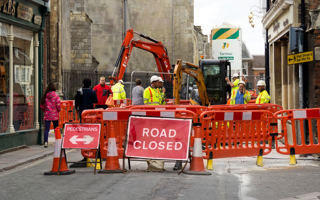Four out of five motorists say average speed cameras are more effective, and play a greater role in road safety, than traditional cameras that catch speeding drivers in one location, according to new research from the RAC.
A survey of more than 2,000 motorists found that 79% believe average speed cameras are better at slowing down vehicles compared to just one in 10 (9%) who felt single location cameras were more effective.
While 70% of those questioned felt traditional speed cameras were effective at getting drivers to slow down at their specific location, 80% said they made little difference beyond where they are sited.
In contrast average speed cameras, which work over longer distances between two or more locations, were thought to be far better at getting drivers to stick to the speed limit, with 86% claiming they were very (38%) or reasonably (48%) effective. Only 12% did not believe them to be very effective.
When asked if they felt one type of camera was fairer on motorists, nearly half (46%) said that it was not a question of whether one is fairer than the other, but that they are both there to improve road safety.
However, a quarter (25%) believe average speed cameras are fairer on drivers while one in five (18%) maintained there was no difference. Only 7% said fixed, one location speed cameras were fairer on motorists.
Among those who thought average speed cameras were fairer, 81% claim they promote a smoother driving style and more consistent driving speeds, rather than drivers hitting the brakes to conform to the limit briefly when driving past a single location camera.
Just over half (53%) believe they are fairer to drivers that accidentally drift above the speed limit very briefly and 17% think that the signage used to highlight them is better and easier for drivers to take in.
Motorists’ opinions about the purpose of speed cameras as a whole is divided, although there is acknowledgement from the majority that they play a valuable road safety role.
More than a third of those surveyed (37%) believe they are intended to improve road safety by slowing down drivers at accident blackspots and places of danger, while 36% say they are there to both improve road safety and raise revenue from drivers.
Just over a quarter (27%) are more cynical claiming they are primarily about raising cash from drivers.
RAC road safety spokesman Pete Williams said: “We know that some drivers can be very cynical about speed cameras, with a significant minority having told us they believe they are more about raising revenue than they are about road safety.
“Interestingly, these latest findings show there is now a strong acceptance that they are there to help save lives and prevent casualties on the road, although more than a third (36%) claim they are about both road safety and raising revenue.”
The research suggests the growing use of average speed cameras in motorway roadworks and increasingly on sections of A-road is reinforcing the road safety message as they are extremely effective at slowing down drivers.
For instance, on the A9 in Scotland the number of deaths has halved since average speed cameras were introduced between Dunblane and Inverness in October 2014. This type of use of average speed cameras, together with the constant addition of more miles of smart motorways with strictly enforced variable speed limits, may be contributing to a shift in perception in favour of regulated speed enforcement over longer stretches of road.
Williams continued: “Speed is one of the main contributory factors in many road collisions so measures that effectively reduce speed over greater distances will mean fewer lives are lost or ruined on our roads. And even though drivers accept this, many still have issues with single location cameras as in places other than accident blackspots, they don’t appear to have lasting effect on behaviour.”





















Login to comment
Comments
No comments have been made yet.